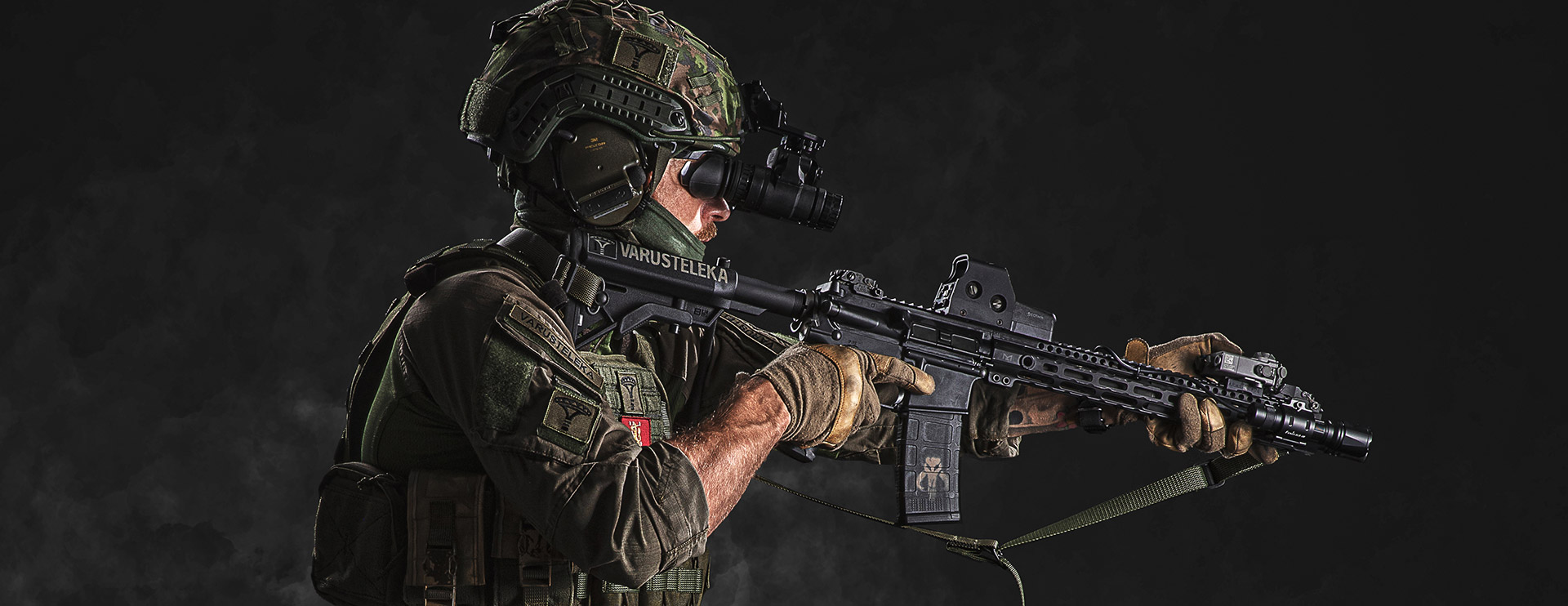
Introduction to weaponlights
Introduction to weaponlights
This article talks about the selection, mounting, and use of weaponlights. If you have been thinking about getting some light for your gun, start here.
Why a weaponlight?
The main purpose of a weaponlight is to enable you to identify your targets and surroundings reliably without making firearm handling more difficult. These situations occur in military and law enforcement duties, hobbies that simulate these kinds of situations, as well as certain hunting forms if artificial light is allowed. Making a decision to fire blindly is totally irresponsible and reckless, and will not lead to anything good. So, weaponlights are vital in many firearm handling situations apart from practicing at the range on a nice and bright day.
Choosing a weaponlight
There are loads of different weaponlights on the market, so finding a suitable one for your needs may seem difficult. There are super cheap lights, very expensive lights, and everything in between. It’s worth remembering that a weaponlight will have to take a lot of pounding, especially in military use. Furthermore, the recoil will punish the light every time you fire the gun. Dirt-cheap lights won’t be able to take this without breaking. So, it is worth investing in quality. However, the final price tag is defined by your requirements.
If you need a weaponlight for your hobbies, Fenix has the best price-quality ratio on the market. The next price category includes the Inforce weapon lights that provide loads of brilliant solutions for the user. In case you’re looking for the best quality and absolute reliability, Surefire weaponlights are unbeatable. If you use the weaponlight in life or death situations, reliability is paramount.
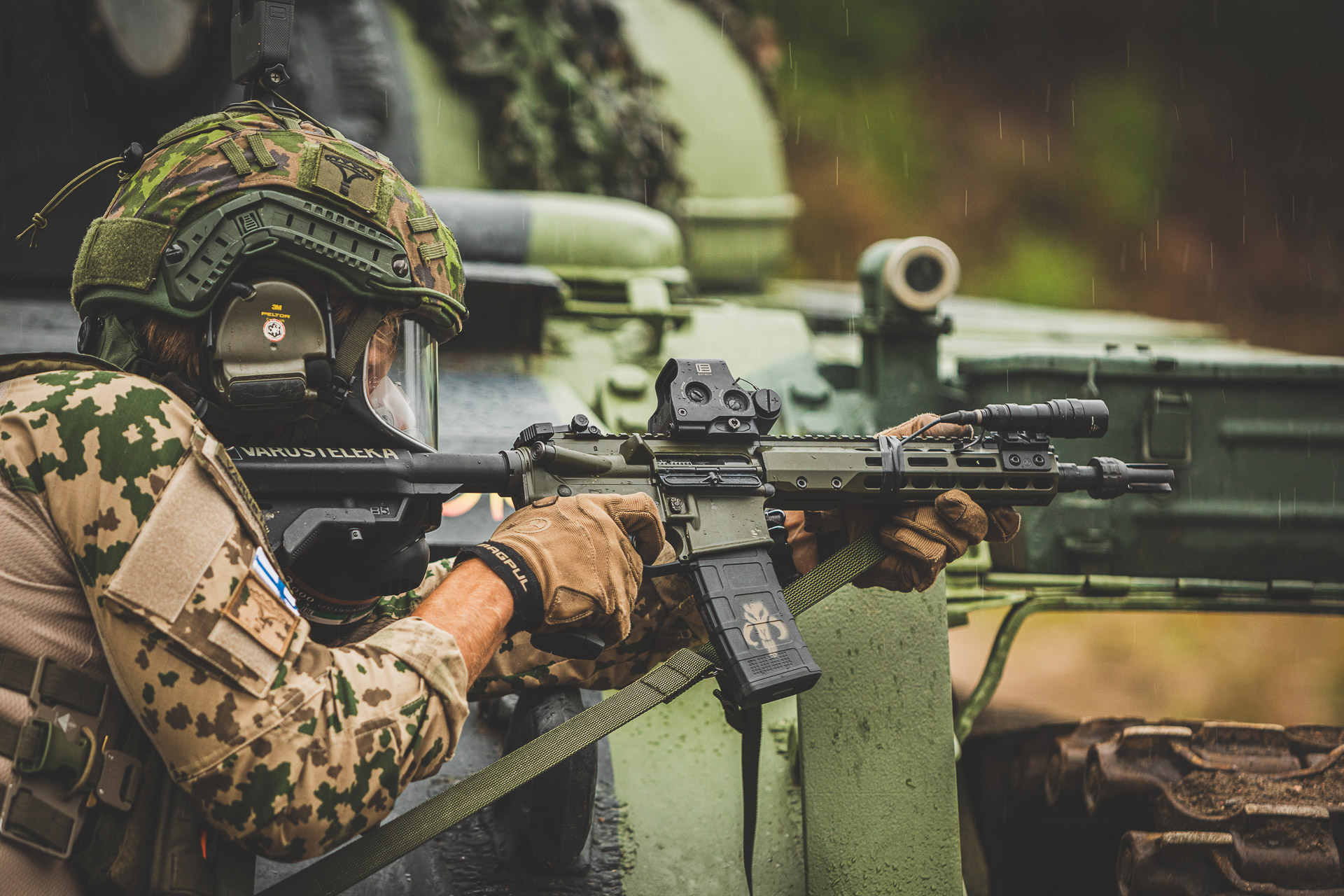
We sell many different weaponlights simply because people have different guns and different needs. The most important factor to consider is the gun type. If you need a pistol light, Surefire X300U-A is the best option there is. In case you need a light for your rifle, there are several excellent options. You need to consider the features, attachment options, and usage when selecting the light for your long gun. You can use handgun lights on rifles but you cannot use rifle lights on handguns.
More lumen is better, yes?
When talking about all sorts of lights lately, people have been emphasizing how many gazillion lumens they have. The thought of the number of lumens telling anything about the usability or performance is pretty outdated. It is safe to say that all the weaponlights we sell are powerful enough at least. The more important question is how you want to use your light.
Too bright weaponlight can also be a bad thing. Sometimes very bad. For example, indoors it will easily blind the user when the light bounces back from the walls. So consider before purchasing whether you will be using your light primarily indoors or outdoors. Less powerful ones are better indoors and more powerful ones outdoors. Usually, the weaponlights will give you the full blast of light at first even if they have other options. This is because it would kinda suck if you really needed 800 lumens on a mission and got five instead.
Mounting and operation
Attaching a pistol light is simple because you basically only have one option. However, if you use the Surefire X300 weaponlight, make sure that it has the pistol mounting system on. X300 comes with systems for mounting the light on rifles, too.
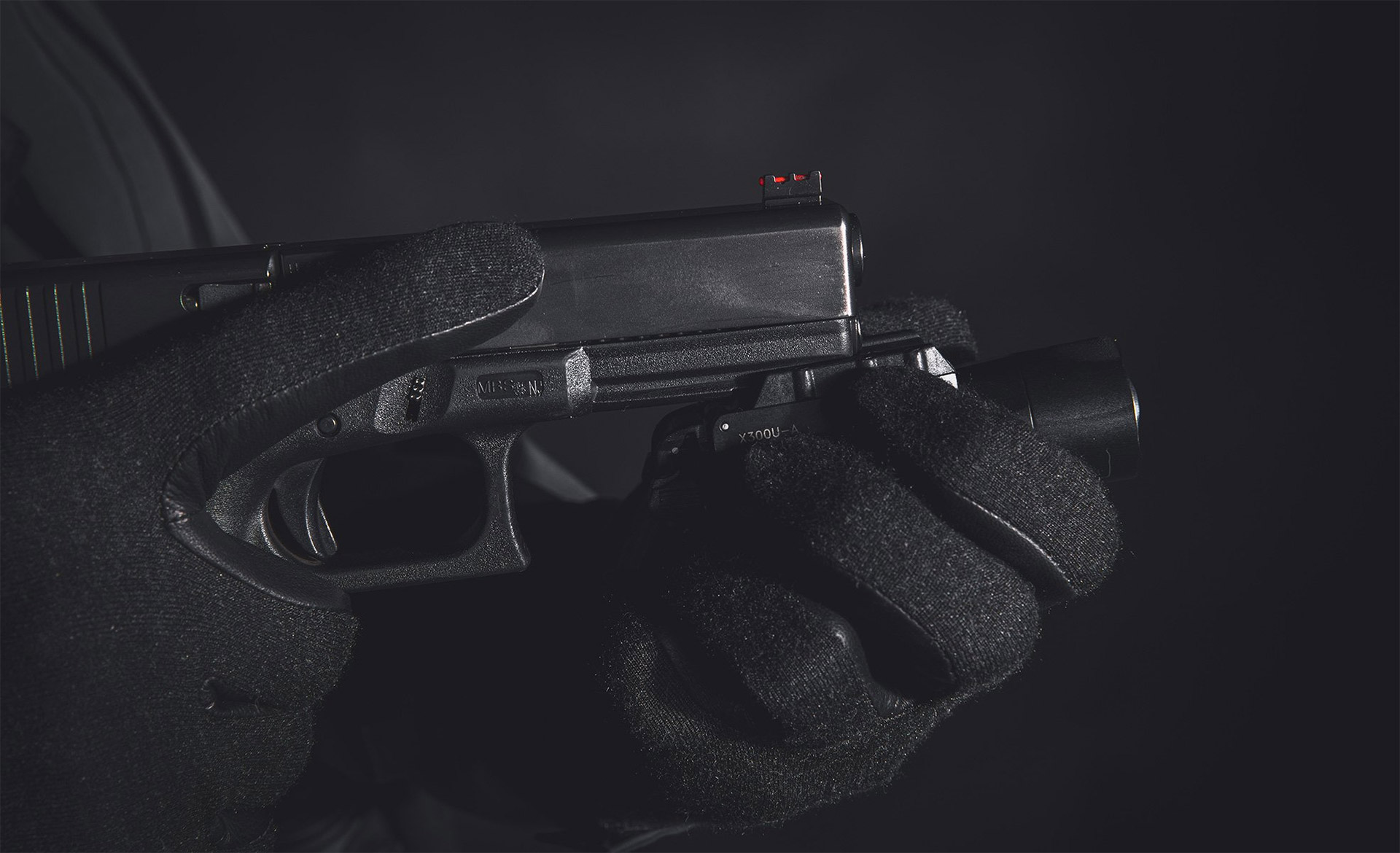
Selecting the rifle mounting system does take a bit more time. Some weaponlights include the mounting system but for others, you must purchase it separately. Different rifles have different attachment methods for gear. The most common are Picatinny, M-lok, and KeyMod. They all have their own weaponlight mounts and adapters, with which you can e.g. attach a piece of Picatinny rail to M-lok. This way you can mount Picatinny rail-specific accessories. The rifle mounts are quite a jungle so it is worth spending some time figuring them out.
You can switch the weaponlight on and off using either the switch on the light itself or a remote switch. If you can mount the light so that you can activate it without changing your grip, you don’t need a remote switch. If your hands are far away from the light, you should use a remote switch. You should be able to operate both the gun and the weaponlight at the same time without making either activity more difficult.
Selecting a place for a weaponlight on a rifle is nearly always a compromise, and it varies a lot based on the size and shape of the light. In any case, the light should be mounted somewhere where it isn’t in the way and where it is effortless to use either directly or with the remote switch. When you shoot from behind a cover, you should make sure that the light setup doesn't leave the light behind the cover.
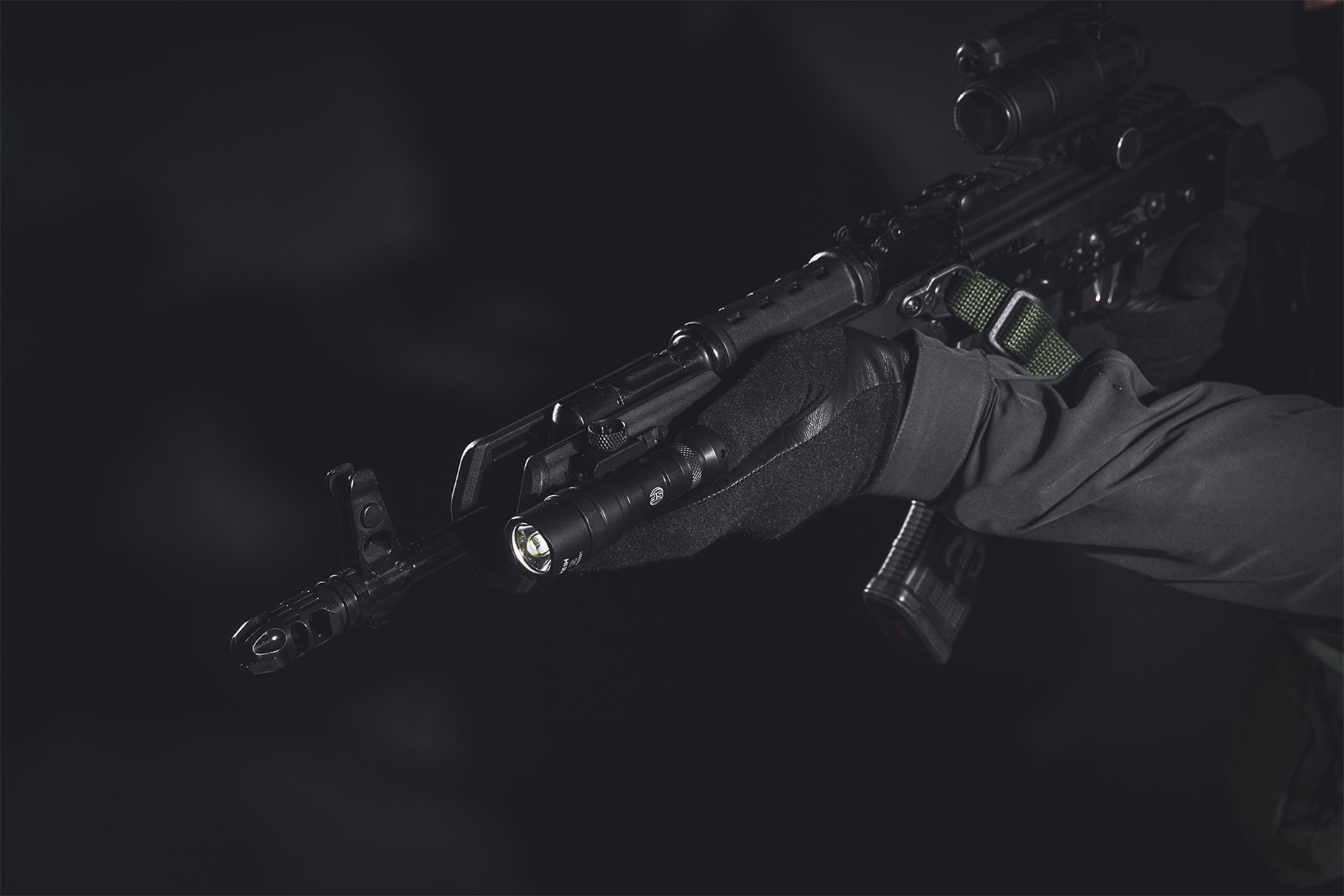
The most common mounting places on the rifle are on the sides and at the top, depending on the weaponlight model, e.g. 11, 12, and 1 o’clock. For example, SureFire X300 and Inforce WML lights work perfectly on top of the gun at 12 o’clock whereas larger weaponlights work better on the side. Weaponlight placement is also affected by other gear attached to the gun, such as sights, lasers, and grips.
Using the weaponlight
There’s a lot more to the efficient and safe use of weaponlights than what’s mentioned in the user manual. Naturally, when you switch on any kind of light in the dark, you will illuminate your position. This is very important to understand especially when it comes to weaponlights. To be able to use the weaponlights most efficiently, we recommend courses on low-light and nighttime operations as well as active training so that you don’t screw things up on a mission.
Use a weaponlight when you need it and only then. You don’t keep the light constantly on and let everybody and their uncle know where you are. Instead, you turn it on for brief moments and turn it off immediately when you no longer need it. You also change your position at the same time.
Below you’ll find a video that explains the significance of light discipline when using weaponlights very well:
But it’s light in summer...
Especially here in the Nordic countries, people think that weaponlights are only useful in fall and winter. After all there’s the midnight sun and all, and nobody needs a light then, right? Wrong! The purpose of the weaponlights and other lights is to bring artificial light to situations where natural light isn’t sufficient. This is vital in firearm handling because identifying the target and assessing the situation can be a matter of life or death.
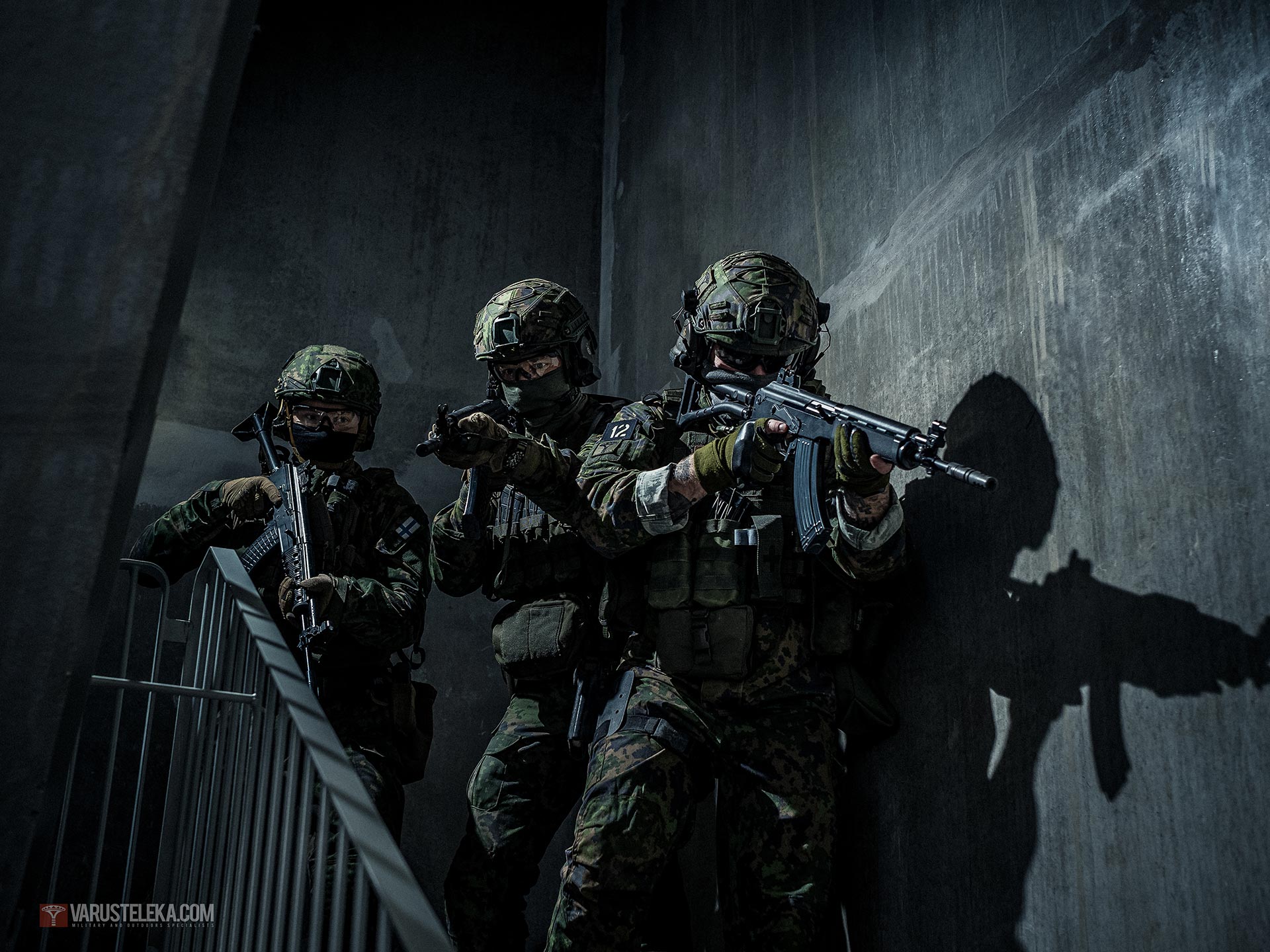
It is essential to understand that there are lots of places where you will need a weaponlight even in summer. Such are e.g. buildings and fortifications. The basement of an apartment building and a bunker are pitch black even in the middle of summer. We have come far from the time when we met the enemy in a gentleman-like fashion on an open field in the middle of a day. In the modern operational environment, a tiny obstacle can create dark shadows where you need a weaponlight to quickly identify your target.
A weaponlight won’t replace a flashlight
The weaponlight always points in the same direction as your gun. So, if you only have that, you will point your gun at everything you want to illuminate. We all remember the second rule of safe firearm handling: “Never point your gun at anything you don’t want to destroy.” Because of this, you only switch on the weaponlight when the threat is present and you need to use your gun.
When you are looking for things, illuminating your way, performing security checks, or fiddling in your tent, you do it with a flashlight or a headlamp. Therefore, a sensible combatant carries both a weaponlight and a separate flashlight/headlamp.